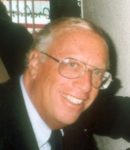By Rabbi Dr. Israel Drazin

BOCA RATON, Florida — Rabbi Dr. Marc D. Angel’s A New World: An American Sephardic Memoir reads like an engrossing novel. It describes the transition of the Angel family from an immigrant Sephardic community into an Americanized group over several generations. In the process, it “reminisces” about the immigrant generation, but also deals with the struggles of trying to maintain old country traditions in the new world. Rabbi Angel publishes weekly essays on “Ideas: Institute for Jewish Ideas and Ideals.” His book can be ordered from this site: Jewishideas.org.
The book is enjoyable and enlightening. It is a book that people should read, Jews and non-Jews, for the tale of the transition and for the differences between Ashkenazic and Sephardic Jews. Most people think they know Jewish practices, but don’t realize that Jews from different countries have many similarities to other Jews but also many differences. There are, among other groups, Ashkenazic and Sephardic Jews. Most people in America know only Ashkenazic Jews. They will find that Sephardic Jews are very interesting.
Ashkenazim lived primarily under Christian harsh domination and were generally unable to secure a secular education. They lived in France, Germany, Italy, Poland, Russia, and Eastern Europe. Their life was sober, melancholy, and focused on piety because of their restraint. The effect of Christian persecution frequently resulted in Ashkenazic rabbis being more stringent in their halakhic rulings. It wasn’t until the eighteenth and nineteenth century that these Jews were westernized.
In contrast, Sephardim had a far better life in Spain until they were expelled in 1492. They had the popular tradition that they descended from the aristocracy of Judea who had been exiled to Spain following the destruction of the ancient temple in Jerusalem in 70 CE. They had an extensive secular education and made great contributions to the Spanish culture in science, medicine, philosophy, and mathematics. They were generally a happy people. While they were observant of halakha, their observance did not lead them to become overly sober and serious. Rather, the pleasures and aesthetics of this world were viewed in a positive light. Although persecuted after 1492 in many countries, many retained the positive elements of their past.
Rabbi Angel tells how his grandparents were among the 30,000 or so Sephardic Jews who came to the United States during the 20th century from Turkey and the Island of Rhodes. In July 1944, the Jews of Rhodes were deported to Auschwitz and murdered there. The dead included members of Rabbi Angel’s family who did not escape during earlier years to America.
The Sephardic Jews from Turkey and Rhodes had some practices that differed with those of Ashkenazim. For example: first-born boys and girls are named after the father’s parents and the second-born boy and girl are named after the mother’s parents, even after parents who are still alive. Subsequent children are named for other relatives, alternating from the father’s to the mother’s side of the family. By doing so, the newborn has a history, a tradition, a connection to the past. In contrast, Ashkenazim are careful not to name children after living relatives.
Ashkenazic families eat latkes on Hanukkah and hamentaschen on Purim. Sephardic families do not have these practices. They eat bourmuelos on Hanukkah and foulares on Purim. Ashkenazim eat chopped liver, gefilte fish, matzah ball soup, cholent, and kugel in honor of Shabbat. Sephardic families do not use these “traditional Shabbat dishes.” A plate of Ashkenazic food is typically brown, beige and orange. Sometimes a sprig of parsley is tossed in to dress up the color. In contrast, a plate of Sephardic food is typically colorful and full of variety.
And there are many religious practices where the groups differ. For example, on the Saturday night before Rosh Hashanah at around midnight, Ashkenazic Jews hold penitential services called Selihot. Sephardic Jews engage in this service on Sunday morning around 4 AM.
There are many other differences which readers will find interesting while reading the often-difficult history of the Angel family, and they will realize that despite some differences the two groups consider each other perfectly good Jews.
*
Rabbi Dr. Drazin is a retired brigadier general, an attorney, and author of more than 50 books.